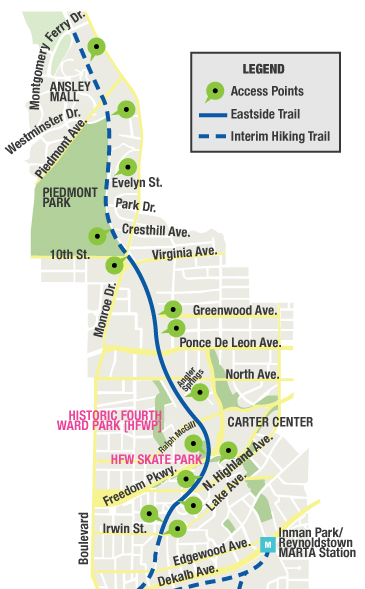This Stuff Works
I’ve mentioned before that the Atlanta Beltline is one of my favorite projects in the country. My connection to Atlanta spans a couple of phases in my life and I’ve been trying to keep up with the progress of the Beltline and also stay attuned to the challenges they face as they move the project forward. Recent articles and videos have debated certain merits of the project (some are already complaining it is too crowded) and comparisons are being made to the economic development associated with the 1996 Olympics. I was there during the Olympics (very fun times by the way) and saw first hand some of the development that occurred in and around Atlanta. Some of that development was simply window dressing, hiding the undesirable underbelly of Atlanta from the prying eyes of the international community. Some of the development was more comprehensive and community-based in nature and has had long-lasting positive effects. Due to its sprawling nature and the lack of inhibiting geography, Atlanta has so many pockets of communities spread throughout the City (I’m talking ITP/inside the perimeter). What intrigues me the most about the Beltline is the vision to connect many of these communities in ways that allow you to travel in a manner that does not involve a car. As someone who spent 2 – 5+ hours a day in my car while working in and around Atlanta, I’ve come to appreciate the improved quality of life one experiences when transportation options are greater and commute times are less (Charleston, stop complaining about your “traffic problems”).
The way the Beltline utilizes systems of parks and trails to connect communities is not a new concept but one that if done right can do more than simply improve transportation. It encourages investment and furthers economic development. It creates healthier communities and individuals. This rails to trails movement is strong throughout the country and now my very own Charleston has a great opportunity to make its own statement and along the way, add value to an area that is primed for revitalization. I attended an Urban Land Institute meeting this morning and listened to Kate Nevin of Enough Pie and Tom Bradford of Charleston Moves introduce their ideas around the concept of a “LowLine” in the upper peninsula part of the City of Charleston. I’m assuming the name pays homage to New York’s HighLine and maybe Atlanta’s Beltline but regardless the idea of a lowline in the Lowcountry is gaining momentum. The connection that almost 1.5 miles of unused railroad tracks totaling close to 55 acres has to revitalizing an underutilized and geographic important area of the city is becoming more and more evident. I look forward to hearing the progress of the LowLine concept play out and will pay close attention to the synergies created for revitalizing that part of town. It is evident to me that parks and trails can transform our communities and become not only a catalyst for revitalization but also a valued asset for many years to come.
My Beltline Visit Last Week
I was in Atlanta last week for the Southeast Energy Alliance Conference (SEEA) and I had an opportunity one cold and rainy morning to explore a section of the Beltine that runs approximately from Piedmont Park to the Inman Park area. It was great seeing the progress of the project. The section I ran/ jogged/walked/splashed through included the Ponce City Market project (the largest adaptive reuse project in Atlanta’s history) by Jamestown who is also developing Mixson in my own backyard of North Charleston (The Sustainability Institute has an office there) and we enjoy the partnering our organizations have collaborated on thus far…but I digress…the path I took also winded through Piedmont Park, the Historic Fourth Ward Park, and a yet to be finished section of the Beltline. Below are pictures I took along the way.

